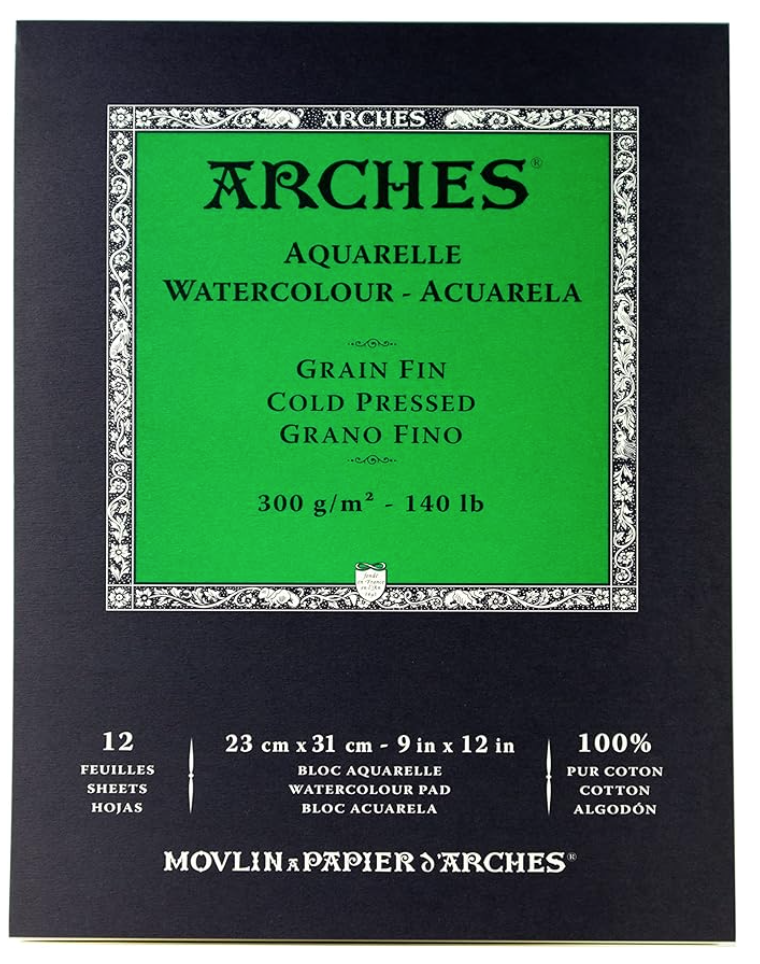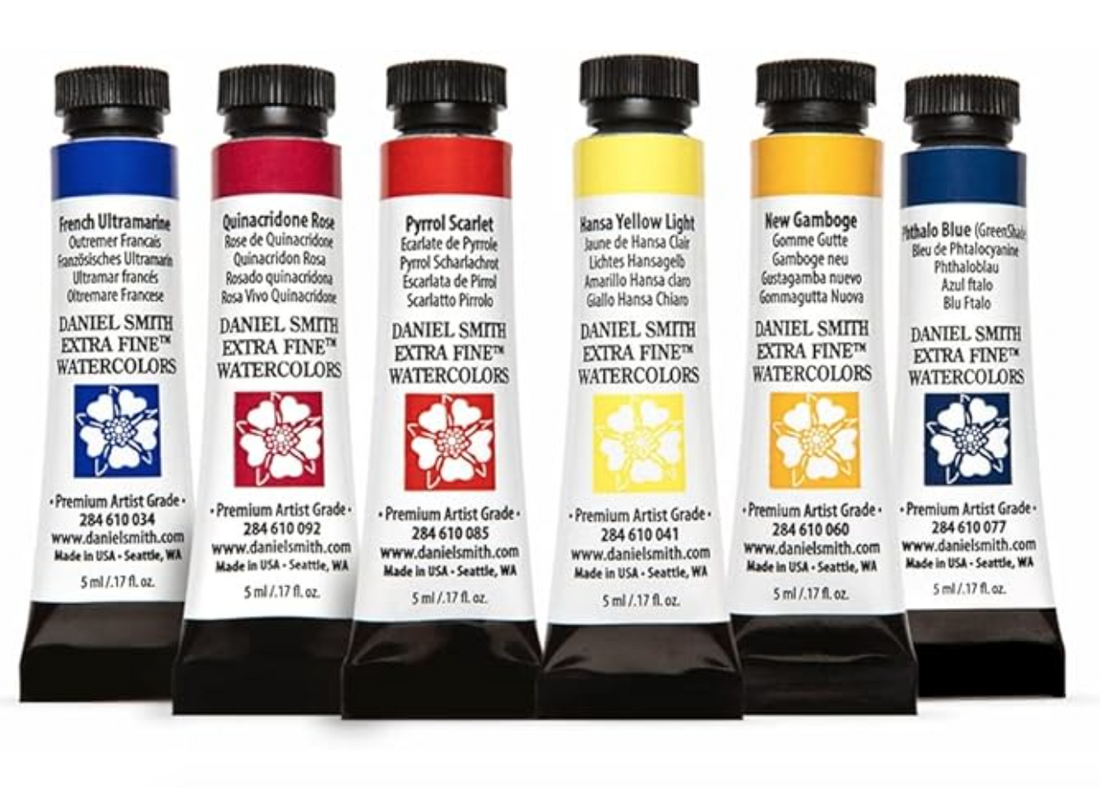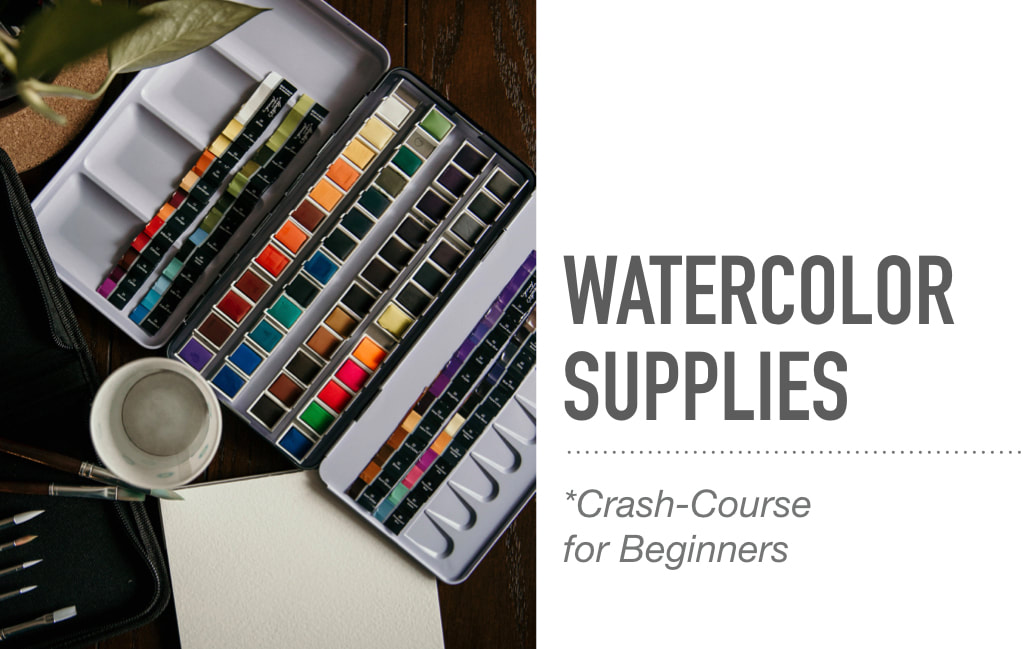
Want your watercolor brushes to last a long time? Which everyday mistakes could be damaging them without you even realizing it?
If you’ve been painting for any length of time, you know that quality art supplies can be a serious investment.
And nothing’s more frustrating than a favorite brush losing its shape, falling apart, or becoming unusable because of simple avoidable mistakes.
In this post, I’m sharing 10 must-know brush care tips that will help you keep your watercolor brushes in top shape for as long as possible. These are the before, during, and after painting habits that can make a big difference over time!
But first, let’s talk about the difference between watercolor brushes and brushes created for other painting mediums.
If you’ve ever wandered down the brush aisle at an art supply store, you’ve probably noticed that watercolor brushes look and feel quite different from brushes used for acrylics or oils–and for good reason.
Watercolor brushes are specially designed to work with the fluid, transparent nature of watercolor paint. They’re typically softer, more absorbent, and have a finer point or edge to allow for delicate washes, smooth blends, and controlled detail.
Unlike stiffer bristles used for heavier paints, watercolor brushes are meant to hold a generous amount of water and pigment, releasing it gradually as you paint.
This unique construction makes them incredibly responsive—but also more delicate, which is why proper care is essential to keep them in good shape.
Here’s everything you need to know to keep your watercolor brushes in great shape for years to come!
10 Watercolor Brush Care Tips Every Artist Should Know
1. Soften the Bristles of New Brushes Carefully
When you buy a brand-new watercolor brush, the bristles often come coated in a hard glue to preserve their shape during shipping. This is water-soluble and should not be forcibly removed.
Here’s what to do:
- Hold the bristles under warm (not hot) running water.
- Gently massage the bristles with your fingers until the glue dissolves.
- Avoid scraping or using tools—this can damage the bristles permanently.
2. Use Your Brushes Only for Watercolor
It may be tempting to use the same brushes for watercolor, gouache, acrylic, and everything else–but don’t! Watercolor brushes are designed specifically for the unique needs of transparent watercolor.
Why this matters:
- Acrylics and gouache are opaque and heavier—they can cling to bristles and affect future watercolor vibrancy.
- Using different media can cause brushes to wear down faster or alter their shape.
Keep a dedicated set of brushes for watercolor only.
3. Always Wet Your Brush Before Painting
Never go into your paint pans or palette with a dry brush. Soften and prep the bristles first! You can also spritz some water on your paint 10-15 minutes before starting to paint, which will help moisten and activate it.
How to prep your brush:
- Dip it into clean water.
- Let the bristles absorb water, then remove the excess.
- Now you’re ready to pick up paint.
This helps the brush work more effectively and reduces wear on the bristles.
Recommended Watercolor Supplies
Check out my Watercolor Supplies 101 masterclass—your one-stop guide to everything you need to know about watercolor paper, paint, and brushes!
I’ll also walk you through which brush types and sizes I recommend starting with, so you can build a solid beginner-friendly set.
4. Pre-Wet Your Paints, Don’t Jab Your Brush
Especially when using dried pan paints or dry palettes, don’t scrub your brush into the paint to activate it.
Instead:
- Use a spray bottle to lightly mist your paints before starting.
- Wake up your brush with a gentle swirl in water, let it soak a bit, then softly swirl it into your paint to load up with color.
This gentle approach protects your brush bristles from fraying or breaking.
5. Don’t Let Paint Creep into the Ferrule
The ferrule is the metal part between the bristles and the handle. If paint builds up here, it’s extremely difficult to clean and can ruin the brush.
Best practice:
- Keep paint within the lower half of the bristles.
- Rinse frequently, especially when mixing thick or intense colors.
This helps maintain both the shape and cleanliness of your brush.
6. Clean Brushes Thoroughly After Each Use
Leaving paint in your brush—even a little—can cause staining, stiff bristles, and long-term damage.
Quick cleaning routine:
- Swirl the brush gently in clean water.
- Repeat until the water runs clear.
- If needed, gently blot and rinse again.
Clean water coming out = clean brush!
7. Never Leave Your Brush Soaking in Water
Leaving your brush tip-down in a jar of water is a surefire way to ruin it.
Here’s what can happen:
- Water seeps into the ferrule and weakens the glue.
- Handles (especially wood) can swell, crack, or peel.
- Bristles bend out of shape permanently.
Always clean, then lay your brush flat or hang it bristles-down to dry.
8. Dry Your Brush the Right Way
Proper drying is essential for long-term brush care. Never store wet brushes bristles-up in jars or cups, as water can seep into the ferrule and weaken the glue or warp the bristles.
After cleaning:
- Lay the brush flat on a towel or
- Hang it bristles-down using a brush stand or DIY contraption (Pinterest is full of clever ideas!)
Drying bristles-down prevents moisture from settling into the ferrule or handle.
9. Deep Clean and Condition Natural Hair Brushes
Natural hair brushes are great—but they’re also more delicate and pricey. I personally only have synthetic brushes in my studio.
Every couple of weeks:
- Use a brush cleaner/conditioner (like The Masters Brush Cleaner or similar).
- Wet the brush slightly, swirl it in the cleaner, and massage gently in your palm.
- Rinse thoroughly and dry as usual.
This keeps natural hairs soft, clean, and conditioned.
10. Avoid Using Masking Fluid with Your Good Brushes
Masking fluid can easily destroy watercolor brushes. It’s sticky, dries fast, and can be nearly impossible to remove without tearing bristles.
Instead:
- Use cheap, old, or already-damaged brushes.
- Or apply masking fluid with toothpicks, silicone tools, or other applicators.
- If you must use a brush, coat it with liquid hand soap before dipping in masking fluid to help reduce damage.
Want to avoid masking fluid disasters? In this post, I share key tips that will help you improve faster and paint with more confidence.
Taking a few extra moments to clean, prep, and store your brushes correctly can extend their life by years. And when you’re investing in quality art supplies, that’s a big deal.
Which of these tips are you already using—and which ones are you going to start trying today?
Let me know in the comments, and feel free to bookmark or share this post with your artist friends!
Erika Lancaster- Artist + Online Art Teacher – BLOG ARTICLES









